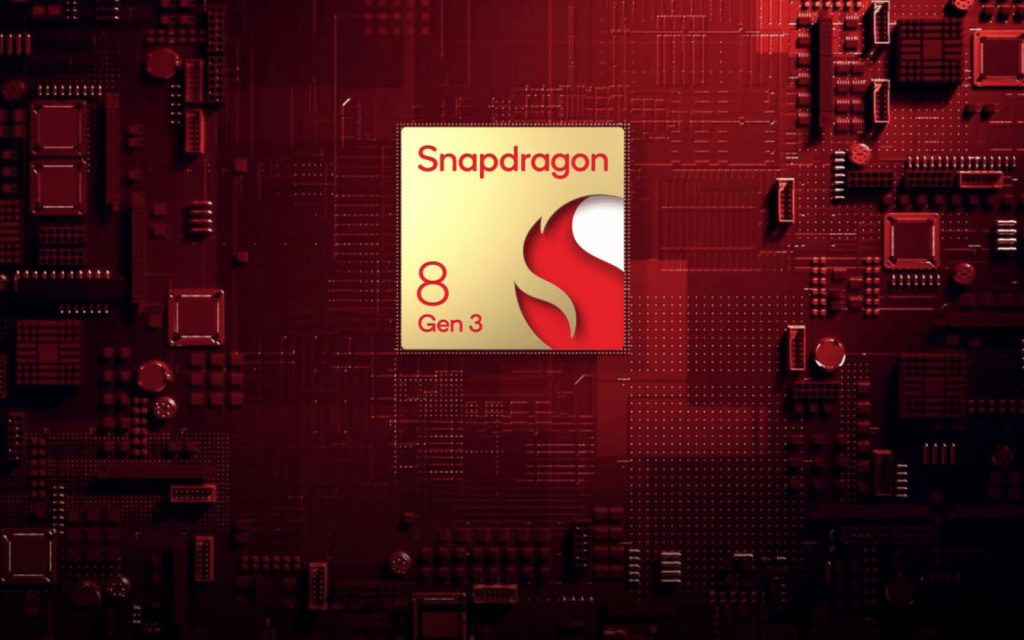At this year’s Snapdragon Summit, Qualcomm unveiled the Snapdragon 8 Gen 3 – its much-anticipated mobile flagship SoC (System on Chip) – following its announcement of Snapdragon X Elite, its latest PC processor platform.
As with every new flagship mobile SoC, the Snapdragon 8 Gen 3 promises improved camera capabilities, “console-defying” gaming performance, and fast connectivity. This time around, Qualcomm has also added “studio-quality audio” and a heavy focus on generative AI.
Qualcomm’s Snapdragon SoCs have enjoyed their position atop Android-based performance charts for a long time. They haven’t faired as well against Apple’s A-series chips in the last few years but if industry rumours are true that could change with the Snapdragon 8 Gen 3.
A peek inside the Snapdragon 8 Gen 3
Qualcomm’s gone and changed its Kryo CPU core layout again. Instead of the 1+4+3 design used for the SD 8 Gen 2, the Snapdragon 8 Gen 3 features a 1+5+2 design with a solitary Cortex-X4 core, five A720 cores, and two A520 cores. It’s also (supposedly) 30% more performant and 20% more efficient.
Qualcomm claims the new Cortex-X4 core, clocked at 3.3GHz, is 15% faster and 40% more power efficient than the Cortex-X3 core in last year’s SD 8 Gen 2. Interestingly, two of the five A720 cores are clocked slightly higher than the other three. They’re apparently supposed to help out with demanding tasks, like games, that won’t need more performance threads.
Also interesting is Qualcomm’s decision to stay on TSMC’s 4nm fabrication node instead of following Apple’s move to the new 3nm node for the A17 Pro. We can’t say we blame it, considering the low yield rates TSMC is facing with its new 3nm node.
The company was quieter regarding GPU improvements. After adding hardware-accelerated ray tracing in the SD 8 Gen 2 last year, there probably isn’t much room to add more headline features. Nevertheless, it said this year’s Adreno GPU offers a 25% improvement in both performance and power efficiency.
Bringing the AI cloud to your pocket
We probably don’t need to tell you AI has been this year’s tech buzzword, with every company even remotely involved in technology (and some that aren’t) adding it to their products or services in some form. Qualcomm has done the same for the Snapdragon 8 Gen 3.
Support for Stability AI’s ‘Stable Diffusion’ text-to-image model and Meta’s ‘Llama 2’ large language model is possible with Qualcomm’s AI Engine. This will leverage the Snapdragon 8 Gen 3’s Hexagon NPU, Kryo CPU, Adreno GPU, and all the system memory it can to perform these tasks on-device.
Read More: Qualcomm’s new Snapdragon X Elite processor takes aim at Apple and Intel
The AI Engine also includes something Qualcomm calls Sensing Hub, which uses OpenAI’s ‘Whisper’ for text-to-speech duties. It can apparently also supply the AI Engine with a user’s personal info like location, age, favourite activities, and “fitness level”, according to The Verge.
CPU and GPU improvements are great, that last point, maybe not.
Qualcomm mentioned a few brands that will adopt its new SoC in their flagship devices, like Asus, Honor, OPPO, Vivo, and Xiaomi. Curiously, Samsung didn’t get a mention. But that’s likely because Qualcomm’s list wasn’t meant to be exhaustive. It’s probably a stretch to count that as confirmation that the South Korean company will shift to its self-made Exynos SoCs for the S24 series. We’ll just have to wait to see how things unfold in 2024.





